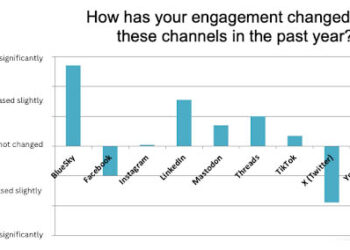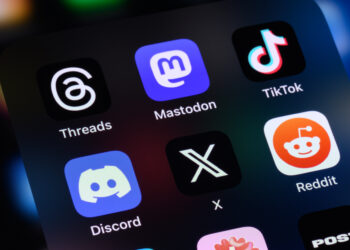After Day 1, you quickly learn it’s best to take a somewhat Zen approach to Sci Foo Camp. There are 12-14 “breakout” sessions going on at any time (I used the term breakout advisedly since there is really nothing to breakout from — with the exception of the opening remarks and the wrap-up session, it’s all scattered concurrent sessions). Beyond that, there are any number of impromptu conversations happening in the “camp,” in the hallways, or outside on the lawn.
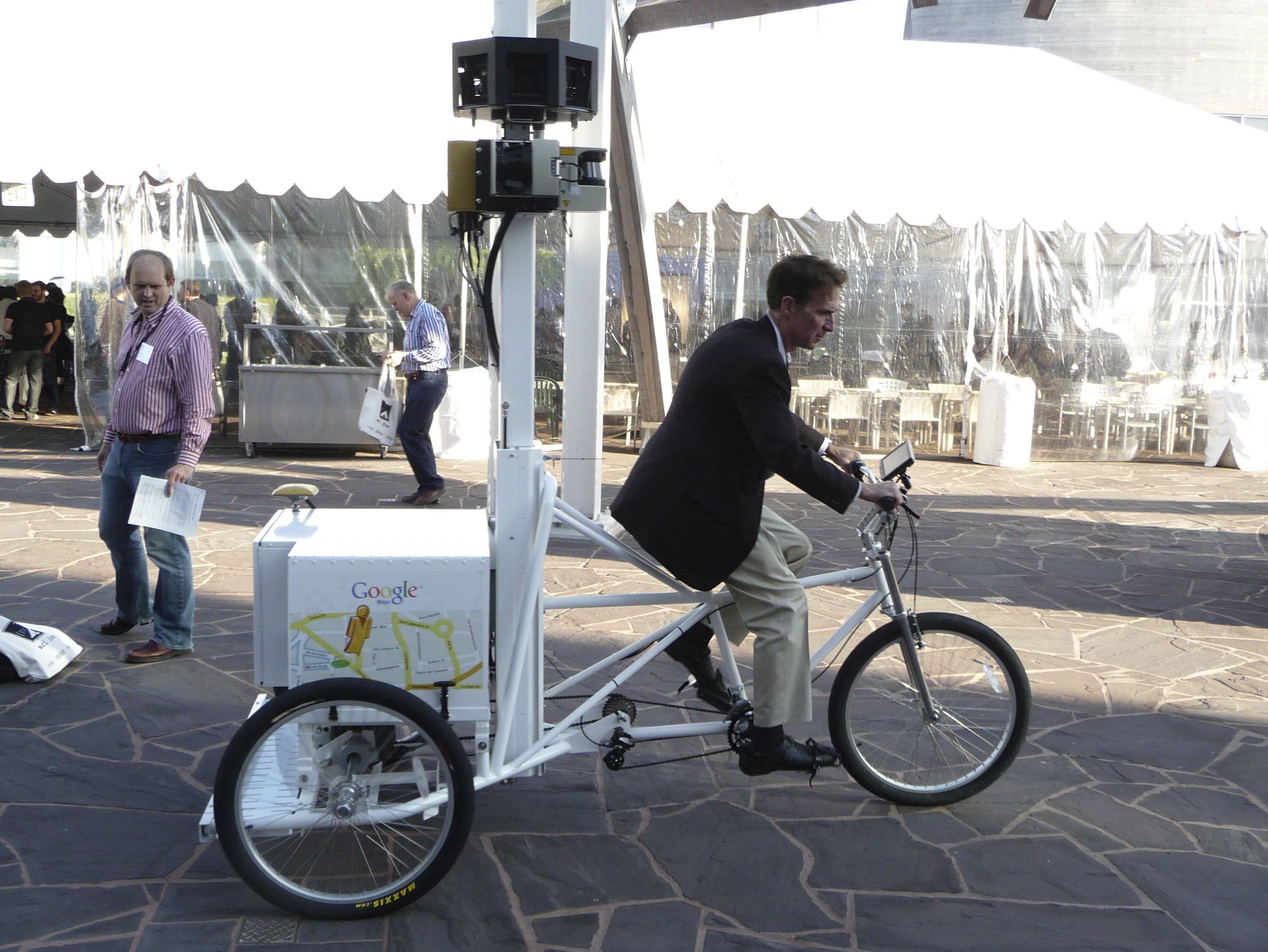
Moreover, there are other happenings, such as the Google Earth “holodeck” (a chamber with a 360 degree immersion in Google Earth); a gang headed by Larry Weiss going around offering to stick a cotton swab up your nose to test for Methicillin-resistant Staphylococcus aureus (MRSA) as part of some bet as to what percentage of people have it in their nostrils; rides on the new Google Maps tricycle; and a one-man science fair in the form of Simon Field performing various demonstrations with magnets, phosphorus, and liquid nitrogen, among other agents. There is quite simply too much going on at once to have any hope of adhering to a predetermined plan.
The better approach is to have a general idea of what you might be interested in and to head off in the direction you think that session might be found, at approximately the time that you think that session might be happening, with the understanding that you have at best a 50-50 chance of arriving there as planned. Furthermore, even if you do arrive at a session as planned, there remains the very real possibility that the session will have moved somewhere else or morphed into another (equally interesting) topic entirely.
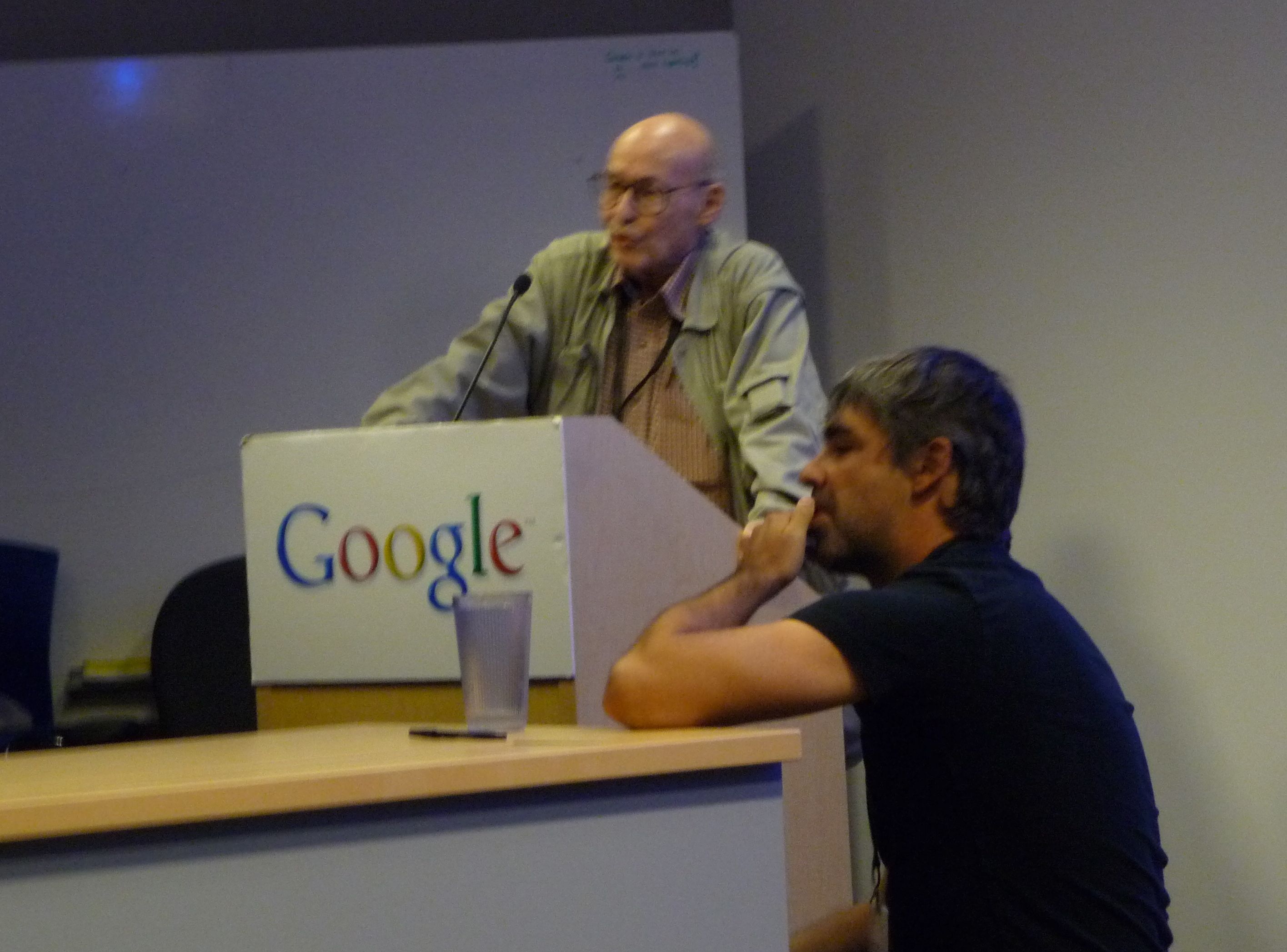
On Day 2 of Sci Foo Camp, I succeeded in making it to the first session I planned on attending, which was a discussion on artificial intelligence (AI) lead by Larry Page. A number of AI researchers were in attendance, including Mavin Minsky, who discussed his book “The Emotion Machine,” and Brandyn Webb. The general proposition put forward by Page (and as he requested his comments be off the record, I will leave it at a general proposition) is that there are not enough people working on AI. The interesting thing about the discussion that followed is that there was no agreement among those assembled in the room on what AI is. How does one define machine intelligence? What would an artificial intelligence look like? Due to this lack of agreement there were a divergence of views on what should be done to accelerate progress in the field. Despite not cracking the AI problem during the session, it was a great discussion highlighting the complexity of the undertaking.
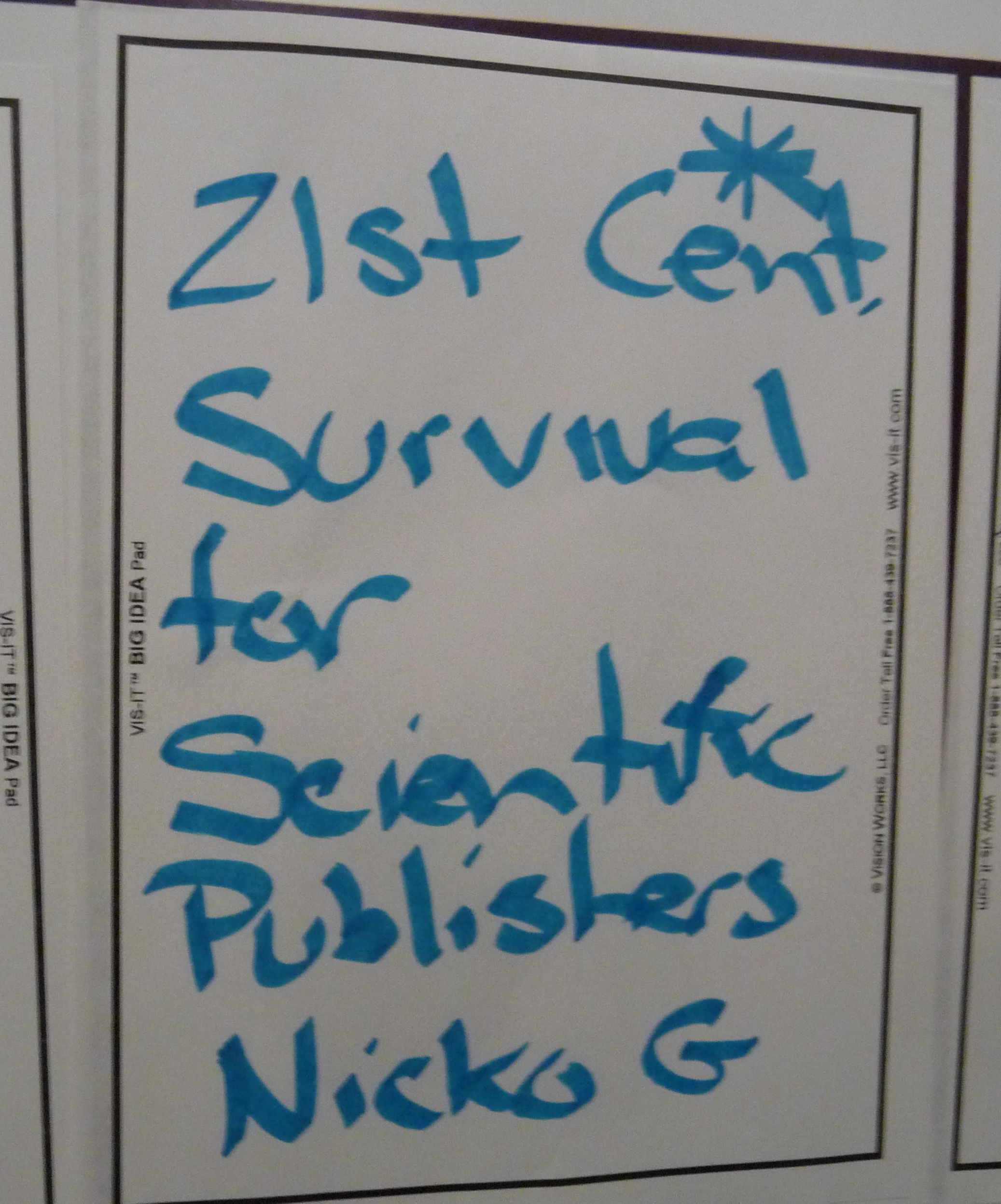
The next session I managed to attend was provocatively titled “21st Century Survival Guide for Scientific Publishers” and was organized by Nicko Goncharoff, managing director of SureChem. We had a lively little group for this session, including Tim O’Reilly, Stefan von Holtzbrinck (the Holtzbrinck Group), Anthony Williams (Chemspider), Michael Rogan (PD Online Research), Martin Fenner (Medizinische Hochschule Hannover), Emily Chenette (Nature Publishing Group), Mackenzie Cowell, and Victorio Bo. This was a free-wheeling discussion, with general agreement that the scientific publishing industry is in the process of being disrupted (Nicko mentioned Michael Nielsen’s recent blog post as a launching point for the discussion). There was discussion about what is needed to survive the disruption. Ideas included the willingness to cannibalize one’s own revenue streams, moving past social media as marketing to embed social media technology and thinking into the DNA of one’s organization, developing a deep expertise in software development, the need for experimentation (placing a lot of small bets), and even using publishing as a loss-leader to drive other service activities.
The last session I attended in the morning was titled “Wiki 3.0,” and was organized by Robert Hoffman (Memorial Sloan-Kettering Cancer Center). Robert is working on a very interesting project called Mememoir that introduces authorship and trust metrics into wikis. The discussion revolved around the challenges of validating authorship.
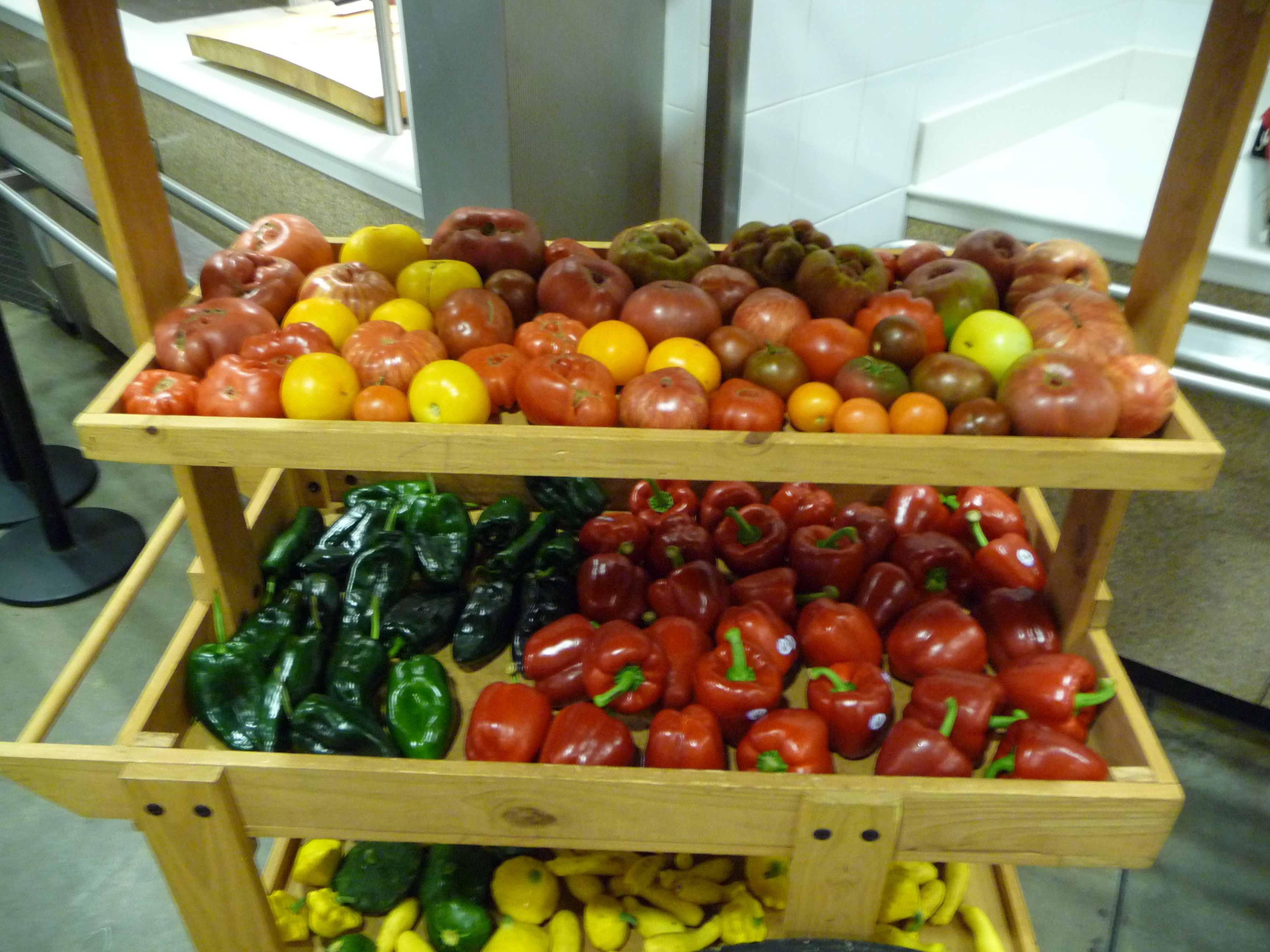
Lunch at the Googleplex is an experience to be savored. Organic fruits and vegetables (some of it grown on-site), free-range livestock, delicious preparation, and, in my case, all accompanied by a conversation with biologist Gretchen LeBuhn (San Francisco State University) who has organized the Great Sunflower Project. The Great Sunflower Project (GSP) is actually not so much about sunflowers, but rather about about using bees to gather data about climate change. It’s also an excellent example of citizen science as it requires thousands of non-scientists to participate by planting sunflowers and submitting data on bee visitation.
After lunch I attended a session on the potential uses of Google Wave in scientific research and scholarship. To make this session even more interesting, developers from Google Wave were in attendance. So the session was not simply about applications for Google Wave, but also about what features might be built into Google Wave to better support research and scholarship.
The last session I attended on the second day was called Lightning Talks organized by Nathan Torkington. Lightning Talks are a highly effective format, which I recommend for other conferences. The format provides a forum for talks of 5 minutes or less on any topic. This session featured back-to-back talks by Ben Fry on data visualization, George Dyson on Darwin, Adam Summers on how mako sharks swim so fast (hint: it’s in the skin), Christopher Stumm on automated astro-telemetry, Christian Bök on the use of bacteria to create biological machines that create and store poetry over vast periods of time, and many many others.
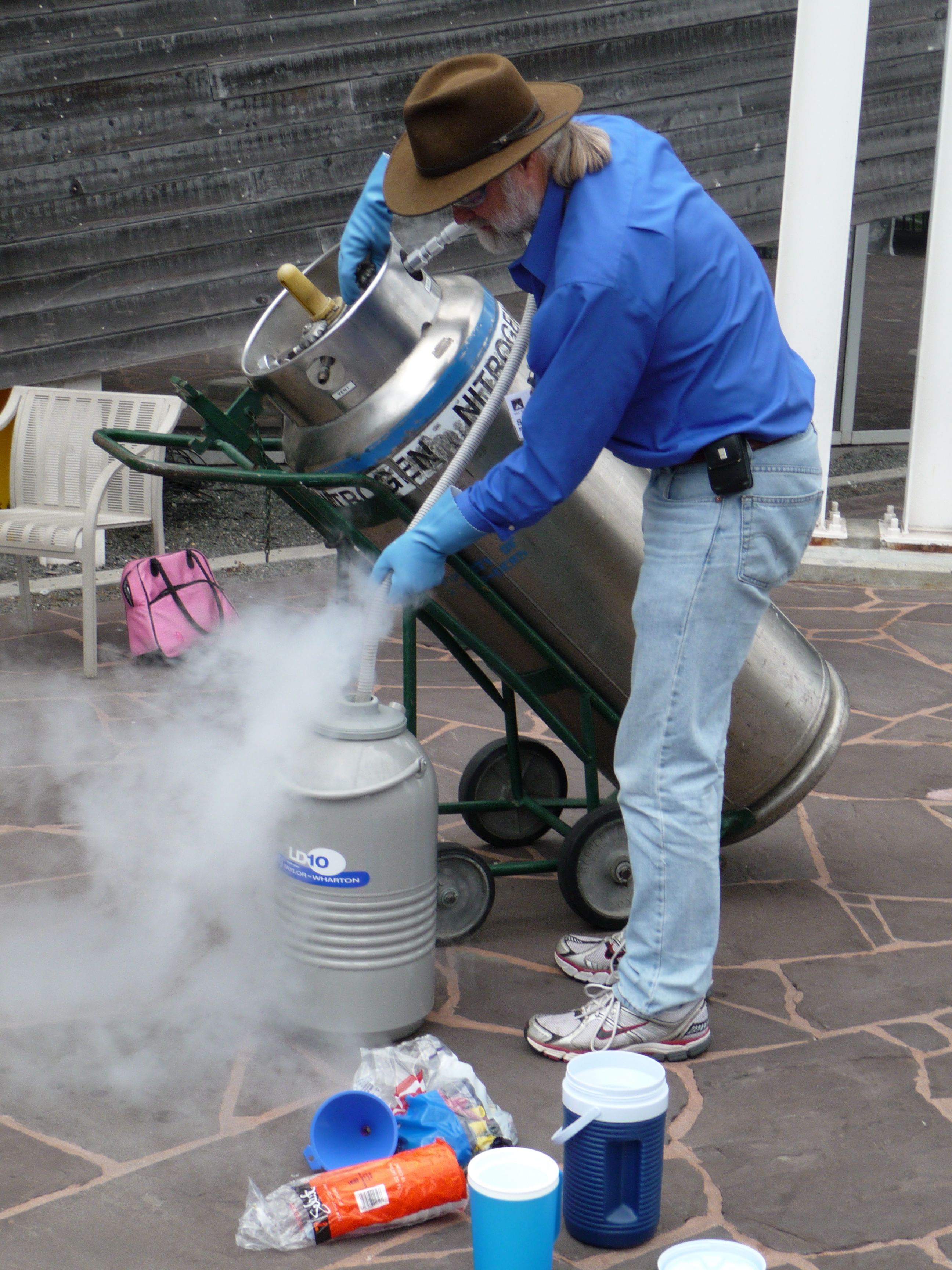
By the end of the day my brain had processed so much new information it was in danger of overloading. Fortunately, there was cold beer to help with that. And ice cream. Ice cream made onsite with liquid nitrogen (of course). Followed by some additional talks, a film about dirt, and a demonstration of sodium acetate crystals by Theodore Gray. Theodore conjectured that Kurt Vonnegut had sodium acetate crystals in mind when he wrote about Ice-Nine in Cat’s Cradle, which I though was a joke until after the experiment.
The activities continued until around midnight, when the buses brought us back to the hotel for some much needed rest in preparation for Day 3.
Discussion
6 Thoughts on "Sci Foo Camp – Day 2"
Hey Michael
Enjoying your summaries! Is that Bill Nye on the map bike?
Michael – all I can say is WOW! I’m so jealous!
“Ideas included the willingness to cannibalize one’s own revenue streams, moving past social media as marketing to embed social media technology and thinking into the DNA of one’s organization, developing a deep expertise in software development, the need for experimentation (placing a lot of small bets), and even using publishing as a loss-leader to drive other service activities”
Awesome ideas – can’t wait for you to be back on the SSP IN Conference planning meetings.
We’re heading in a similar direction!!!
Thanks for this report, Michael. Like Ann, I’d love to have been there.
I’d have pulled the self-same paragraph as Ann to focus upon.
Surely it’s not a question of cannibalizing revenue streams, is it? Rather, acknowledging that many existing business models have peaked, then managing their staged decline, and redeploying sufficient resources to be able to transition content, brands and relationships into new media channels.
This is less about ‘traditional versus contemporary’ than it is about ‘do you want your properties to be in a position to be able to deliver growth in the future, or are you looking to carve out a role for yourself as the cautious custodian of existing business models that currently deliver flat or negative growth and are about to enter a flat spin?’
If you meant ‘moving past social media as *just* marketing’ I concur with you, but social media has the potential to deliver outstanding marketing results. If you’re going to take it out of the marketing mix, what are you going to replace it with?
As for embedding a social media mindset into the DNA of STM publishers’ organizational structures… good luck to us all with that one. 😉
I’d also be cautious about flying the flag for further in-house software development. Many publishers have built up a vast and costly empire of in-house web publishing teams which are process-driven and expensive and their leadership will be all too willing to jump on this proposition as a magic bullet in order to justify their existence.
Don’t let them lock and load.
Shut them down. Outsource. Save money. Stay on schedule.
As for publishing as a loss-leader: why make a loss? You can give content away in the right setting and still give yourself the opportunity to monetize adjacent activities, as well as build communities, raise the profile of your brands, generate brand advocacy, and develop authentic engagement with your users and customers.
Great points Andrew.
As to the point about cannibalization, yes, you are correct–managing a staged decline while one transitions to new business models and delivery systems would be ideal. Unfortunately, as noted by Christensen in the Innovator’s Dilemma (and as we are witnessing now in Detroit), that is actually quite hard to pull off.
Your point about marketing and social media is well taken. I agree that social media can be a very effective marketing tool. The point our discussion raised (and that I was clumsily trying to make) was that publishers might think about developing social media products and platforms instead of *only* using those of other organization’s (e.g. Twitter, Facebook) for marketing.
While I agree with you regarding much of the in-house software development that publishers have undertaken in the past, I think we have moved into a new business cycle where software development is critical. In the past, publishers have wasted resources developing complex systems that do not differentiate their products in the marketplace and are often available for cheaper from external sources. Building an in-house production system or an in-house journal hosting platform is clearly a waste of perfectly good 1s and 0s. My comment, however, was in the context of how successful publishers might consider focusing on the development of (content rich) applications instead of publications. And innovative applications, at least in the near future, will likely require in-house development (or at least staff that are knowledgeable enough about application development and design to lead teams of external programmers).
Regarding your last comment… hear hear! May it be so.
![Reblog this post [with Zemanta]](http://img.zemanta.com/reblog_e.png?x-id=1edba40b-3e4b-4ded-b659-9f5d5793c574)
